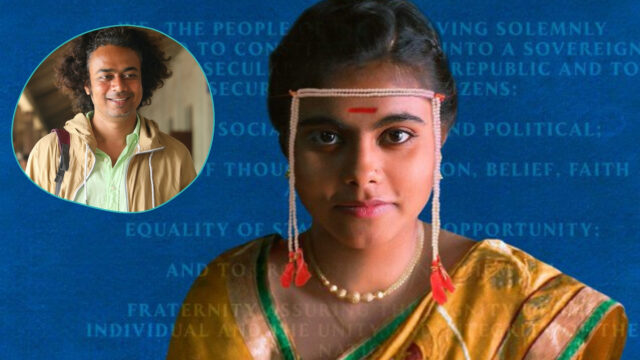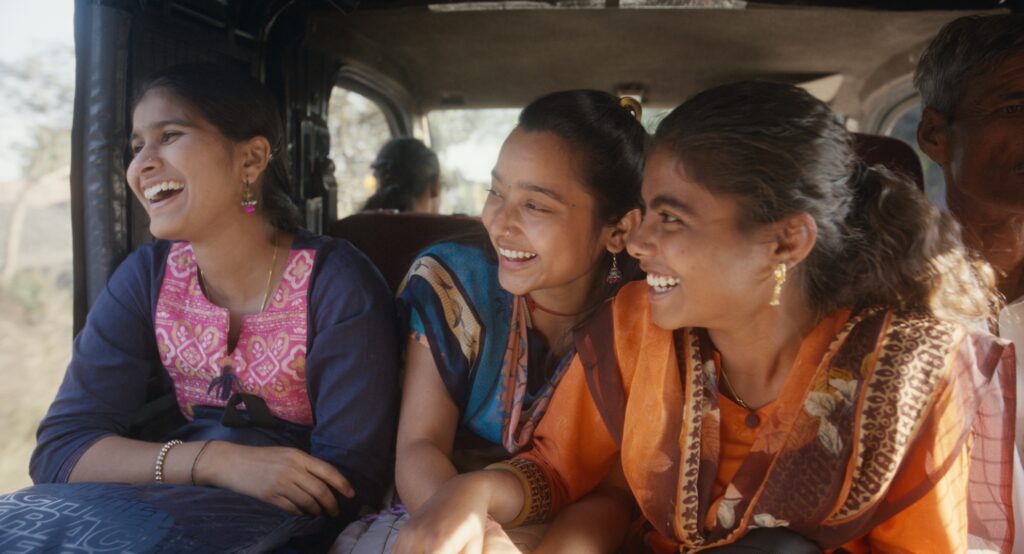
Born in the rustic heartland of Vidarbha, Jayant Digambar Somalkar grew up amidst stories waiting to be told. An engineer by education but a storyteller by soul, he ventured from writing for TV shows to co-directingGuilty Minds (2022) on Prime Video. Sthalis his most intimate creation — a deeply personal Marathi film shot in his own village, with non-actors bringing raw authenticity to the screen. From premiering at the prestigious Toronto International Film Festival (TIFF) to winning the Network for the Promotion of Asian Cinema (NETPAC) award,Sthalhas traveled the world, yet its essence remains rooted in the soil it was born in. The film stars Nandini Chikte, Taranath Khiratkar, and Sandip Parkhi in pivotal roles. In an exclusive conversation with The Movie Mail, Somalkar opens up on all things Sthal, challenges faced by independent films, declining footfalls in theatres, his wishlist of Hindi film actors and more.
Edited excerpts:
The film Sthal has been released theatrically. As an independent Marathi film that is both heart-wrenching and content-driven, did you face any challenges in its release?
A. Releasing an independent film like ours, with very limited resources, is always a challenge. Marathi cinema is known for its strong storytelling, but we also have films with well-established actors who bring in a wide audience.Sthalis not one of those; our protagonist is a newcomer, which makes it even more challenging to attract audiences to theatres. My biggest hope is that once the film releases, it will grow through word-of-mouth, as the story is compelling. We have had screenings at various film festivals, both internationally and in Maharashtra. One of the most memorable screenings was at the Aurangabad Film Festival, where people from different walks of life watched and appreciated the film. Their overwhelming response reassures me that mainstream audiences will also connect with the film.
Do you think the rise of OTT platforms is a reason for the decline in theatre footfall? Is this a cultural shift?
A. Yes, it is a new challenge, especially for independent filmmakers like us who rely on audience footfall in theatres. But I must also acknowledge that going to the theatre is an expensive affair for middle-class and lower-middle-class families. Ticket prices are high, and if it’s a family outing, food and beverages add to the cost. On top of that, there is the hassle of traffic and parking. As a result, people often feel that instead of spending so much on one film, they would rather wait and watch it online. This shift has become even more prominent in the post-pandemic era. Today, audiences want apaisa vasoolmasala film. That said, I still believe that a good film finds its audience.
The performances inSthalare remarkable, especially Nandini Chikte and Taranath Khiratkar, who play the protagonist and her father. How did you cast them?
A. All the actors in the film are non-actors. They had never faced a film camera before, nor had they done theatre. Since I wanted authentic casting, I needed actors who could capture the Marathi dialect of that specific region. I went back to my college and conducted an open audition.
Nandini, who was eventually cast as Savita, auditioned as well. After her first introduction audition, she requested another chance, saying she could cry on-screen, dance, and do more. I told her that if we finalized her, we would inform her. The next day, during another round of auditions in the village, she showed up again and insisted on giving another try. Her enthusiasm impressed me. We gave her a scene, asked her to prepare and perform it on camera. She delivered a fantastic audition, and that’s how she was finalized.
Taranath, who played Daulat Rao, was actually my childhood friend. When I visited the village for auditions, he came to meet me. He had an unkempt beard, and his eyes reflected a deep sorrow. I immediately felt he had the potential to play the protagonist’s father. I asked him if he could commit to the film, and he did. I am incredibly proud of him; he did justice to the character. The rest of the casting also happened organically.
The character of Khapne Sir is that of an educated man who is willing to marry Savita but does not oppose dowry. Why?
A. Yes, he is an educated professor, but who said all educated people are progressive thinkers? Many individuals are hypocrites—they say one thing but act differently. Academic qualifications do not necessarily shape one’s mindset or socio-cultural beliefs.
I did not want to paint Khapne Sir as a villain but as someone who lacks the courage to stand up against his family and society, even for the girl he loves. He is a real character, and we all know such people exist in our society.
The film explores the true meaning of women empowerment. Since it was released around International Women’s Day, do you see a real impact at the grassroot level, or is it just tokenism?
A. There is definitely a degree of tokenism, especially with brands offering special discounts and promotions for Women’s Day. But the larger movement is about changing mindsets, which requires consistent effort.
For me, women’s empowerment is about gender equality and respecting a woman’s choices. In many households, food choices are made based on what the man of the house prefers. Girls are taught from a young age that it is their duty to surrender to the wishes of their father, brother, or husband. This cycle needs to be broken. Why should a woman need validation from a male family member for basic decisions—be it food, clothing, career, financial investments, or marriage? Empowerment is about freedom of choice and practicing it every day.

Given the social issues addressed in the film, do you think having a superstar in a cameo role could have drawn more viewers?
A. Casting a well-known actor for a cameo to increase reach is not a bad idea. However, Marathi cinema is not as star-driven as some other industries. Our audience comes to watch content-rich films.
I am not against the star system, but forcing a celebrity into the narrative could have diluted the film’s authenticity. That’s why I stayed true to the casting choices I made.
The themes ofSthal — dowry, farmer suicides, patriarchy—are universal. This story could be set in Punjab, Bihar, or Bengal. Did you consider making it in Hindi?
A. I did receive suggestions to make it in Hindi. However, I wrote the film in Marathi and set it in Maharashtra because I am deeply familiar with the region, its society, culture, and nuances. While the core story is universal, the setting adds depth and colour to the narrative.
If I ever remake it in Hindi, I would ensure that the cultural essence of the chosen region is well-researched and preserved. It’s not just about translating a script—it’s about transitioning a story into another cultural context.
Are you interested in working with Bollywood stars? Do you have a wishlist?
A. Absolutely! I have stories that I would love to make into Hindi films in the future. When it comes to actors, I am more interested in their craft than their stardom. I find actors like Ranbir Kapoor, Jaideep Ahlawat, and Pankaj Tripathi fascinating. Also, I really admire Alia Bhatt as a performer. It would be a dream to collaborate with her someday.
Read more entertainment news and latest updates, exclusive interviews, reviews of movies and web series on The Movie Mail.














